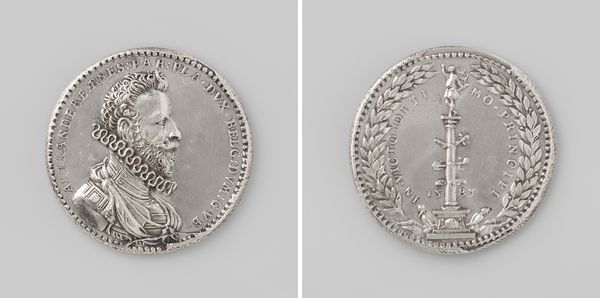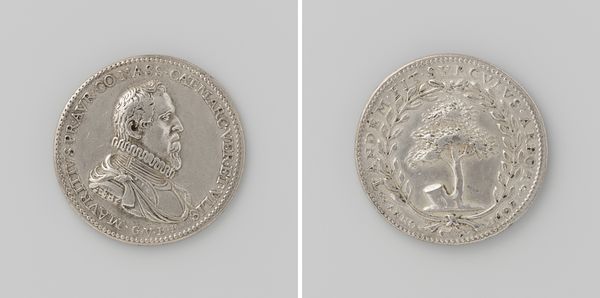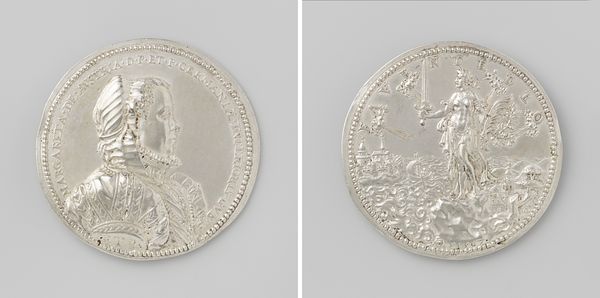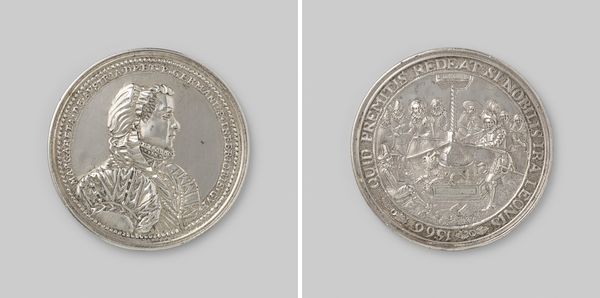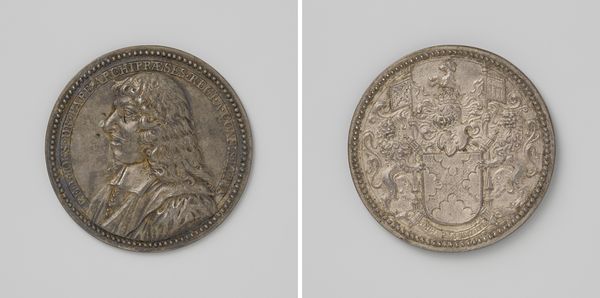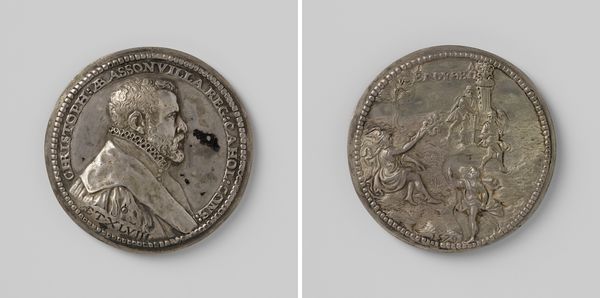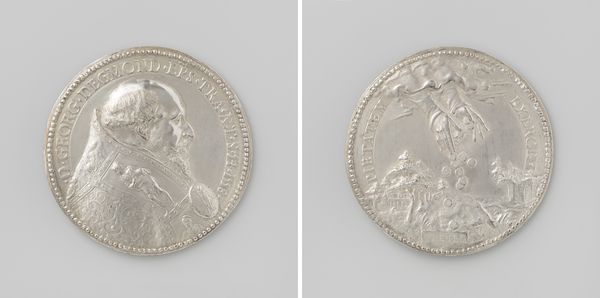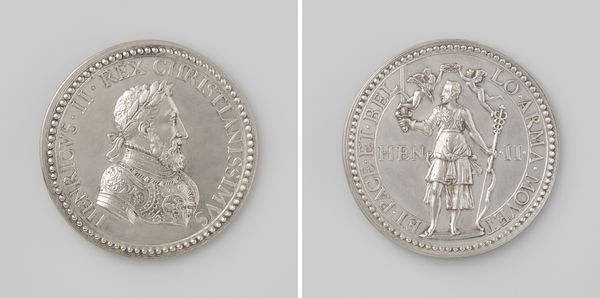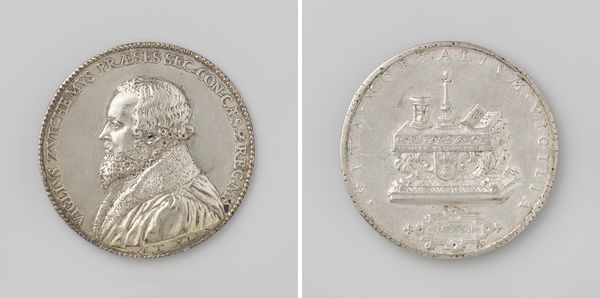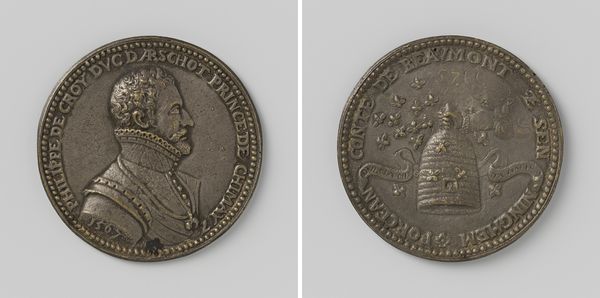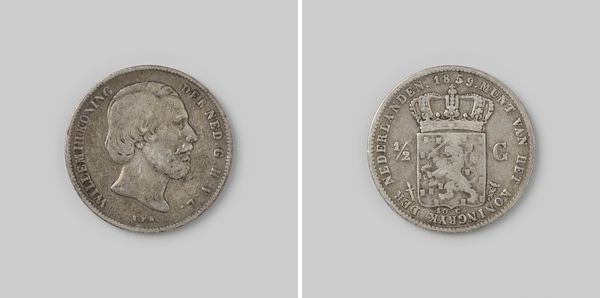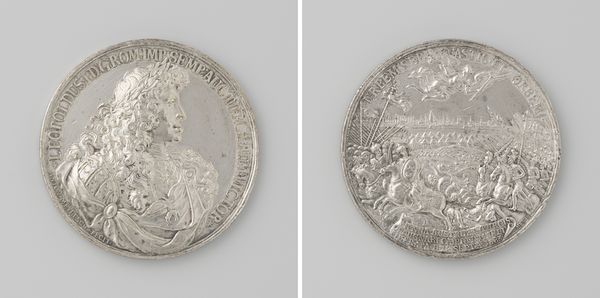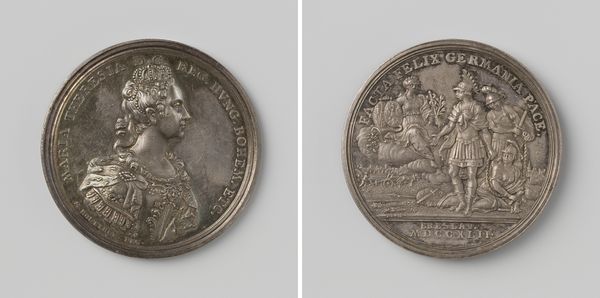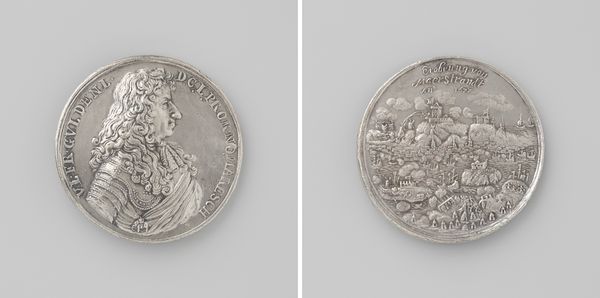
Antoine Perrenot, kardinaal van Granvelle, benoemd tot aartsbisschop van Mechelen 1561
0:00
0:00
metal, relief, sculpture, engraving
#
portrait
#
metal
#
relief
#
11_renaissance
#
sculpture
#
history-painting
#
engraving
#
miniature
Dimensions: diameter 5.9 cm, weight 50.27 gr
Copyright: Rijks Museum: Open Domain
Curator: This exquisite metal relief is a portrait miniature of Antoine Perrenot, Cardinal Granvelle, made in 1561 when he was appointed Archbishop of Mechelen, crafted by Jacques Jonghelinck. Editor: My first impression is a striking duality: one side severe and ordered, the other chaotic, like two sides of a coin revealing conflicting realities. Curator: Precisely. On the obverse, we see a meticulous profile of Granvelle, rendered with crisp lines and an emphasis on the textural detail of his beard and clerical garments. It projects authority, contained within the circular boundary of the medal. Editor: While the reverse plunges us into a tumultuous seascape, with figures flailing amidst a shipwreck, Neptune rises from the waves. It’s rich with allegorical possibilities; is it meant to symbolize Granvelle’s ability to weather any storm? Curator: The dynamism and dramatic density of figures create visual tension against the portrait’s static composure. The waves, the collapsing ship—each element is rendered with energetic detail. Semiotically, the two sides create a visual paradox of control versus chaos. Editor: The figure of Neptune especially, wielding his trident—that image has persisted for millennia across cultures. It invokes power, mastery over the sea...but also the sea’s unpredictable, destructive nature. Did Jonghelinck mean to imbue Granvelle with those conflicting aspects of the sea god? Curator: Possibly. This medal, typical of Renaissance portraiture, transcends mere likeness. The strategic contrast—between controlled portraiture and unrestrained narrative, highlights a tension between individual identity and the forces shaping historical events. Editor: So, what does endure isn’t just Granvelle’s features, but also a powerful condensation of anxieties of his time. We recognize the archetypes, these elemental struggles, and that speaks across centuries. Curator: A sophisticated articulation of power dynamics within the visual vocabulary available to Jonghelinck. Through an informed composition, this piece reveals not just a man, but the period itself. Editor: Yes, reflecting how even miniature forms like this can echo with historical memory and invite interpretation. Curator: I agree. This portrait embodies a potent duality – simultaneously capturing personal and socio-political contexts, leaving a lasting artistic record.
Comments
No comments
Be the first to comment and join the conversation on the ultimate creative platform.
